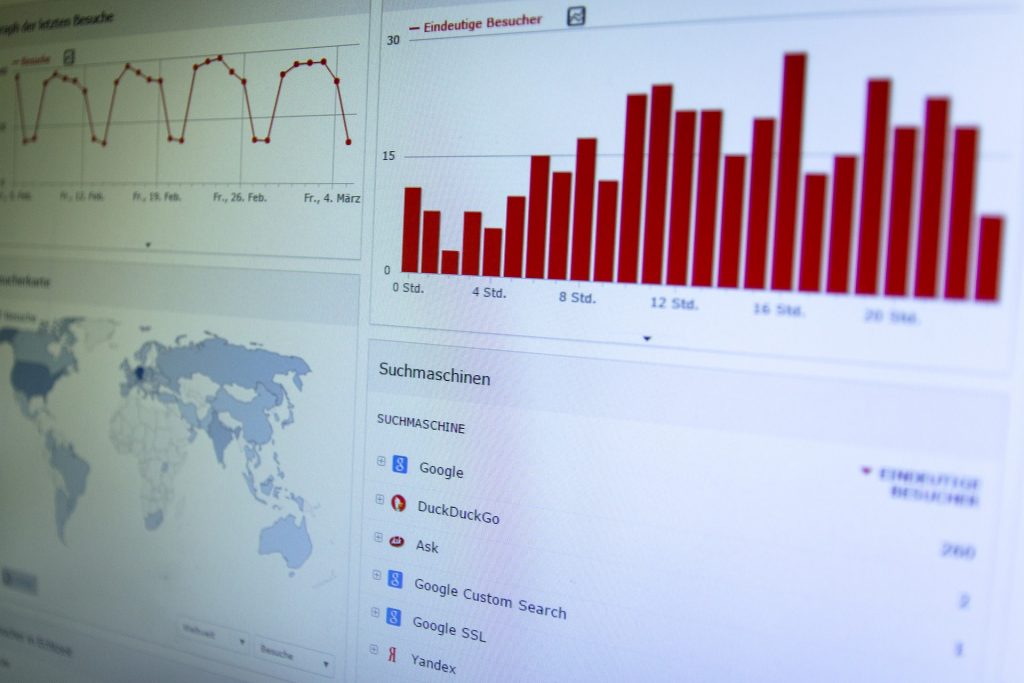
8 social media engagement KPIs you need to measure
Social media platforms offer a lot in terms of analytics or insights but many marketers simply measure likes, comments, and shares, and they’re missing out on valuable data.
Likes, comments, and shares are good metrics to keep track of, but they’re not the only thing that determines if your social media efforts are paying off. By diving deep into the data, you can improve all aspects of your content marketing and create better content across all your channels.
Let’s cover the top social media data points you need to include in your reporting.
What metrics to use to evaluate social media performance

1. Followers
Yes, we’ll want to track the number and make sure that continues to grow with quality subscribers, but you’ll also want to look at the demographic data about them. They chose to follow you and engage with your content, so make sure you’re rewarding them for that decision by providing tailored, quality content they’ll want to engage with.
Are more of your followers women or men? Are they Gen Xers or Millenials? Do they live on the coasts or are they global? By knowing who they are, where they live, and what they interact with, you can share better content.
How to grow followers:
- Post on a frequent basis
- Post when your followers are online
- Boost posts or run ads that target lookalike audiences
2. Reach
Reach tells you how many people were exposed to a post. It showed up somewhere where they had the opportunity to see and engage with it, but doesn’t necessarily mean they did. This number isn’t just based on your followers but if Jane shares your post and her friend sees it in their home feed, they were counted as a reach.
Reach can be a great way to gauge how popular a piece of content was or if the timing was just right for when it was shared. It can also be a good benchmark of how your profile is performing overall. If you see reach consistently growing, chances are good you’re consistently doing a good job with your social media posts.
How to improve reach
- Ask for shares or encourage engagement
- Replicate content that’s done well in the past
- Pay attention to when posts have a high reach
- Incentivize users to engage with or share posts
3. Optimal post time
There are reports that offer generalizations about the best time to post, but honestly your best bet is to look at your real audience and see when they’re active! Most social networks allow this, including Facebook, Instagram, and Twitter.
Still interested in general information on optimal times to post on social media? OK, it’s generally first thing in the morning, later in the afternoon (after 3 p.m.), and early evenings (like 7 – 8 p.m.). The end of the week tends to do well for posts and do not miss out on posting on the weekends!
There’s really no way to improve your optimal post time as it’s based on your followers and their online behaviors.
4. Link clicks and social referral traffic
Understanding who clicks your links, or even better, visits your website are valuable metrics to track. It takes a lot more interest to click through to read more than to simply hit the Like button. By knowing what content intrigues your followers, you can share more posts like that, or even create your own content around similar topics.
You’ll also want to track social referral traffic to your site so you can understand which networks people are more engaged on so you can spend more time with those audiences. Make sure to track assisted conversions via social media to accurately show off how your social media marketing efforts are paying off.
How to improve link clicks
- Use OG data to make your link pretty when shared
- Follow the 80/20 rule (80% of content is fun/engaging and 20% promotional)
- Use a CTA – tell your followers exactly what you want them to do
- Share exclusive content
- Offer discounts or offers
5. Shares
Shares or retweets are a great metric to understand what content your audience wants and what content they’re excited to share with their networks.
How to improve social shares
- Use images
- Use emotional copy: awe, amusement, FOMO, fear, anger
- Promote causes
- Share universally applicable content
- Make your posts valuable and relevant
6. Engagement
Many of the points above fall into the category of engagement, but is a little more granular given Facebook’s updated reactions: Like, love, haha, wow, sad, and angry. You can get a better emotional reaction to your content and see what content gets you a simple like or what content people love.
You’ll want to pay close attention to your account’s overall engagement rate and go deeper by looking at individual posts to see what’s working and what’s not.
How to improve your engagement rate
- Replicate past successes
- Use photos or videos
- Use emotional language
- Encourage reactions
- Study your competition
- Post a mix of content types
- Share exclusive content
7. Comments
Getting a like can be easy, but getting someone to contribute to the conversation can be harder. Comments are another fantastic metric to report on to showcase how engaged your followers are and how relevant your content is to them.
How to improve comments
- Use emotional copy
- Start a conversation
- State an opinion or question
- Create a poll
- Ask for tags
8. Conversions
A conversion is simply any action you want a user to take, whether that’s generating leads or closing deals. Track conversions that started from a social referral or used it in the conversion path.
I always look at social as an assist as most customers need to interact with a brand multiple times before becoming a customer, but when done right, social media is a very important part of the buyer’s journey and helps many online conversions.
How to improve social conversions
- Use clear CTAs – Shop now, sign up, register, download, etc.
- Boost posts or run ads
- Share special offers or promo codes
- Offer exclusive content
Obviously there are other metrics you can pull from social media analytics or Google Analytics, but these are some of the most important metrics I use in my reports. These data points can help you understand your audiences and customers better, aid you in future content marketing tactics, and position yourself as an industry leader.




